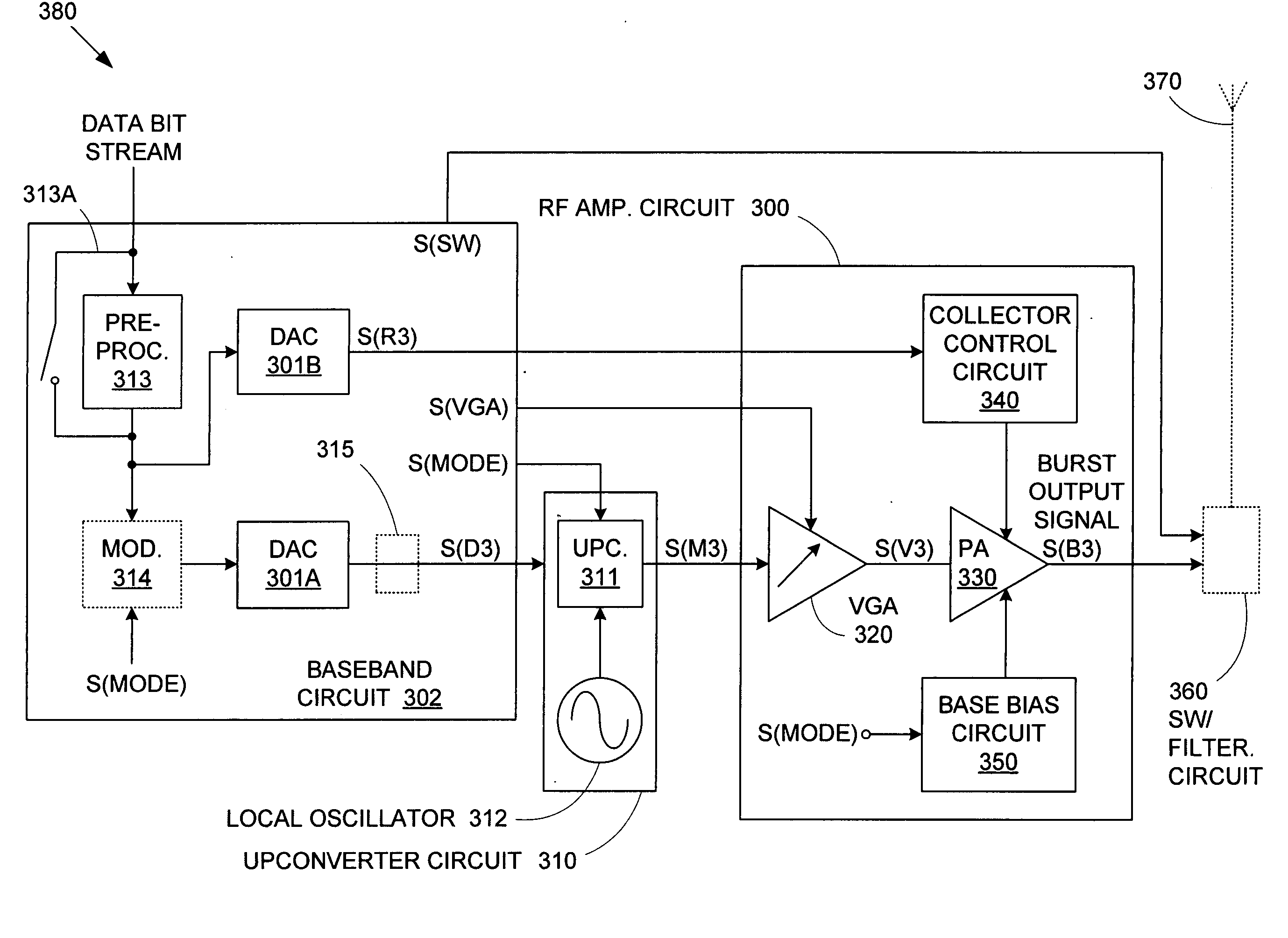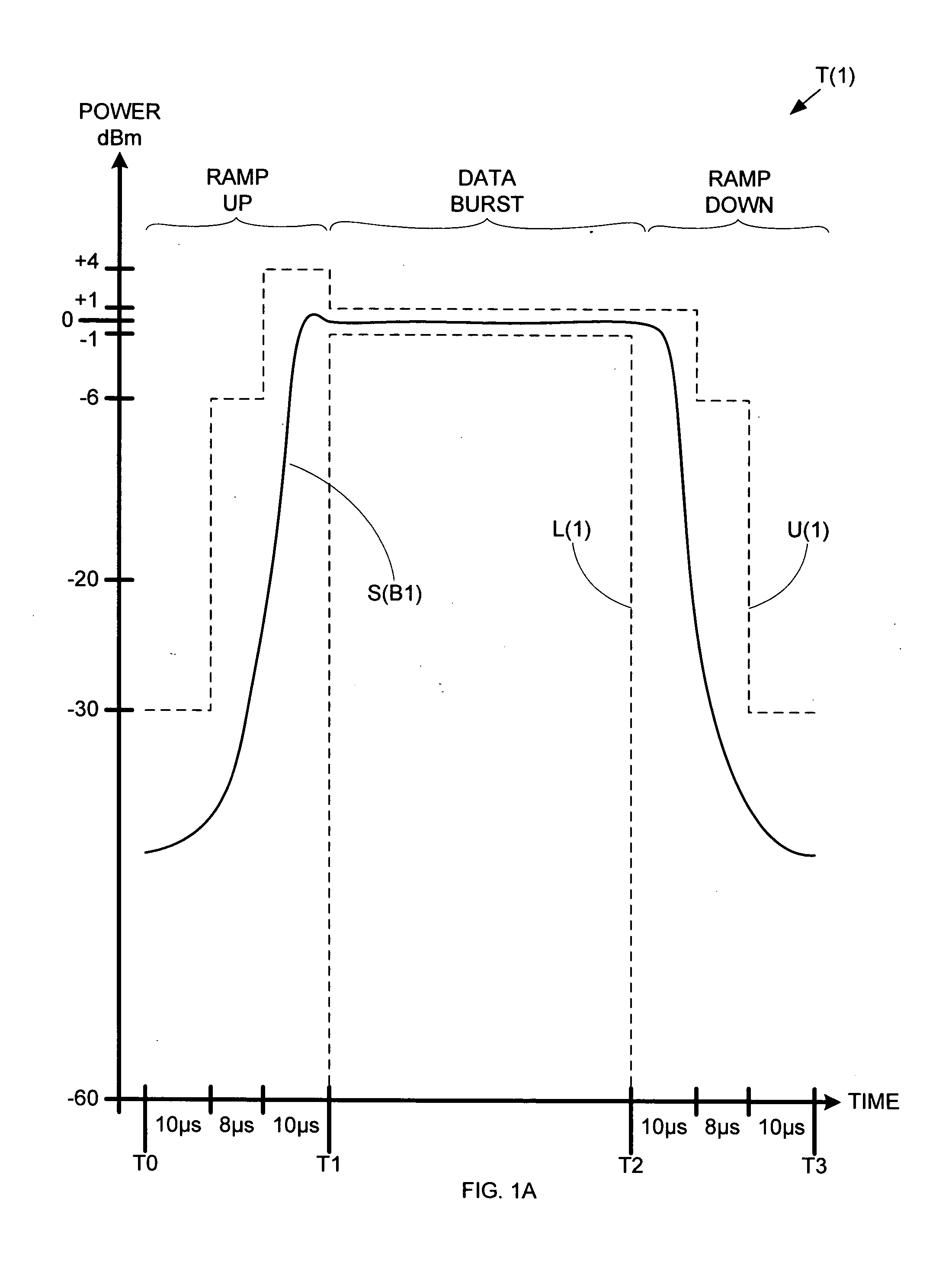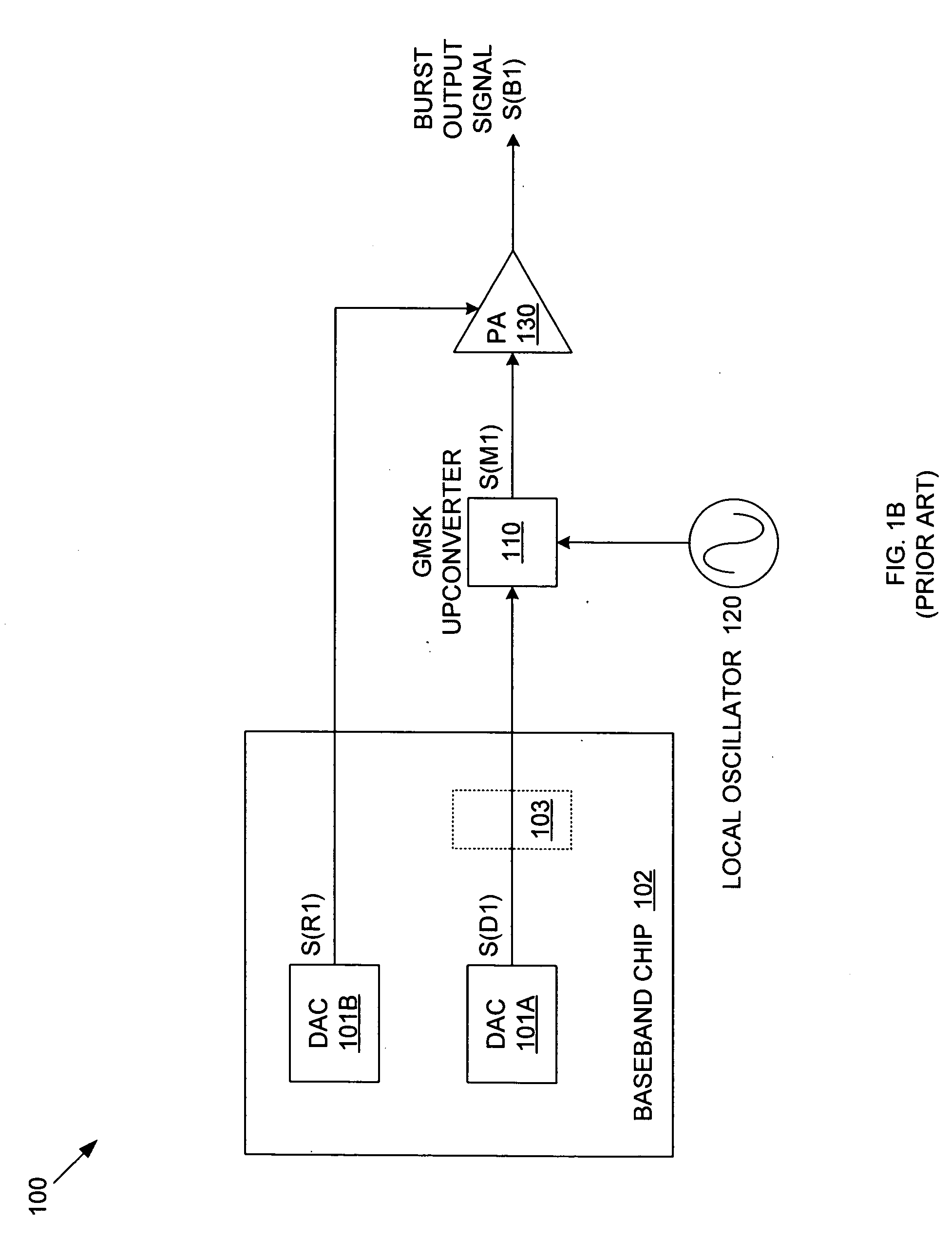Method and architecture for dual-mode linear and saturated power amplifier operation
a power amplifier and linear technology, applied in the field of wireless communications technologies, can solve the problems of user's own data transmission being corrupted, affecting the transmission of other gsm users, and rf signal spilling out of the allowable transmission spectrum,
- Summary
- Abstract
- Description
- Claims
- Application Information
AI Technical Summary
Benefits of technology
Problems solved by technology
Method used
Image
Examples
Embodiment Construction
[0043]FIG. 3 shows a schematic diagram of a transmitter 380 (such as a cellular telephone) that includes a RF amplifier circuit300 in accordance with an embodiment of the invention. In addition to RF amplifier circuit 300, transmitter 380 includes a baseband circuit 302, an upconverter circuit 310, an optional switching / filtering circuit 360, and an antenna 370.
[0044] Note that according to an embodiment of the invention, baseband circuit 302 can be incorporated into a separate baseband chip. According to various other embodiments of the invention, upconverter circuit 310 and RF amplifier circuit 300 can likewise be incorporated into separate chips. According to other embodiments of the invention, all or various sub-combinations of baseband circuit 302, upconverter circuit 310, and RF amplifier circuit 300 can be incorporated into a single chip.
[0045] During operation of transmitter 380, a data bit stream for a GSM or EDGE transmission is provided to baseband circuit 302. In respo...
PUM
 Login to View More
Login to View More Abstract
Description
Claims
Application Information
 Login to View More
Login to View More - R&D
- Intellectual Property
- Life Sciences
- Materials
- Tech Scout
- Unparalleled Data Quality
- Higher Quality Content
- 60% Fewer Hallucinations
Browse by: Latest US Patents, China's latest patents, Technical Efficacy Thesaurus, Application Domain, Technology Topic, Popular Technical Reports.
© 2025 PatSnap. All rights reserved.Legal|Privacy policy|Modern Slavery Act Transparency Statement|Sitemap|About US| Contact US: help@patsnap.com



